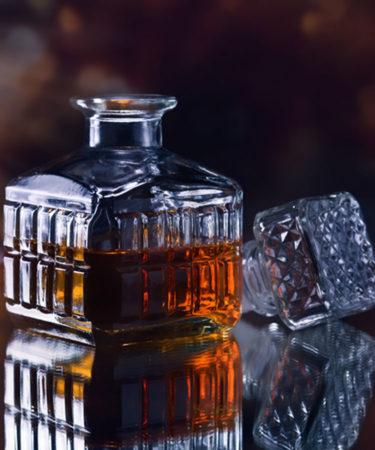Send all questions to [email protected].
I recently purchased an antique crystal whiskey decanter at a flea market. Should I be nervous about lead in the glass getting into my whiskey?
I’d love to say this isn’t something you should be concerned about. Unfortunately, some crystal vessels used to contain trace amounts of lead that could leech into the liquids stored inside them — especially if that drink sat there for a long time. As with the BPA inside aluminum cans we discussed a few weeks back, alcohol and acid have the ability to draw out these compounds, so it’s best you don’t place your whiskey inside an antique decanter. Especially if you plan for it to sit on your bar for a long time.
Fortunately, for all of us, “lead-free” crystal now exists. It’s a requirement in the EU and U.S. that all new crystal glassware is labeled as either leaded or lead-free, so you know you’re purchasing a safe vessel. (VinePair just so happens to sell some beautiful, lead-free decanters.) With any vessel labeled lead-free, the liquid can sit inside as long as you like.
Does sparkling water hydrate you more or less than flat water?
If you’re a person who loves sparkling water, I have good news! Sparkling water is equally as hydrating as flat water. So if you’re someone who’d rather drink a Spindrift after a workout than have a glass fresh from the tap, it will hydrate you just as well.
But the reason so many people seem to think sparkling water isn’t as hydrating as flat is because they often consume less of it due to the carbonation. The carbon dioxide inside sparkling water tends to fill up our stomachs faster, causing us to drink less water and thereby not becoming fully hydrated. So if you are one to go for sparkling instead of still, just make sure you drink to get hydrated.
How long do New England IPAs stay fresh?
This depends on whom you ask, but the collective opinion is that you should drink New England IPAs (NEIPAs) as quickly as possible, and that, after about three weeks to a month, the beer flavors will begin to fade. This is because these beers rely on dry- and late-hopping for all their aromatic oomph; and, as a beer gets older, these aromatics are one of the first things to dissipate. At around month two the flavors will start to fade as well, and by three months post-brew date, NEIPAs are usually dead. So drink them as quickly as you can!
